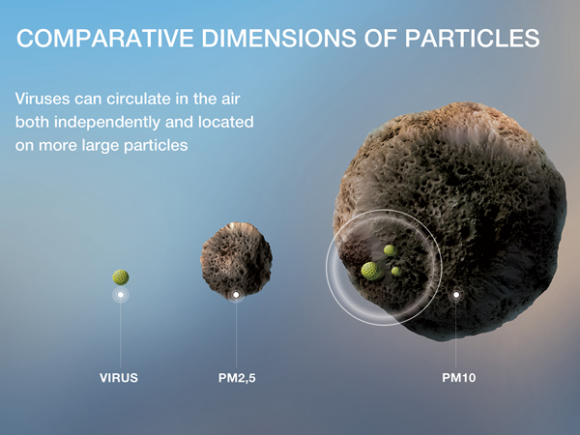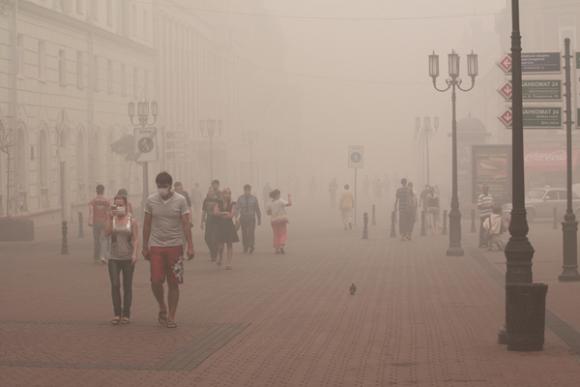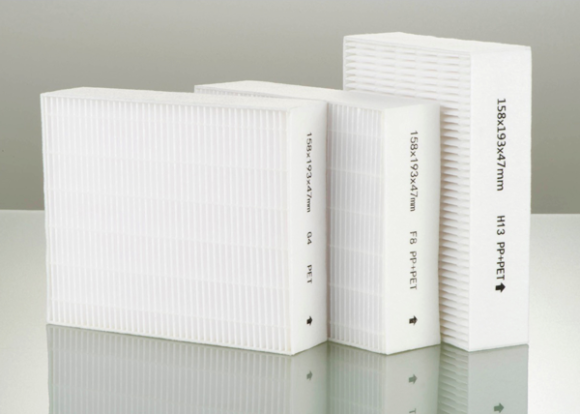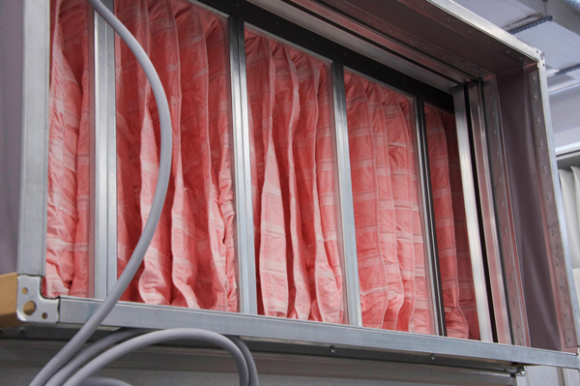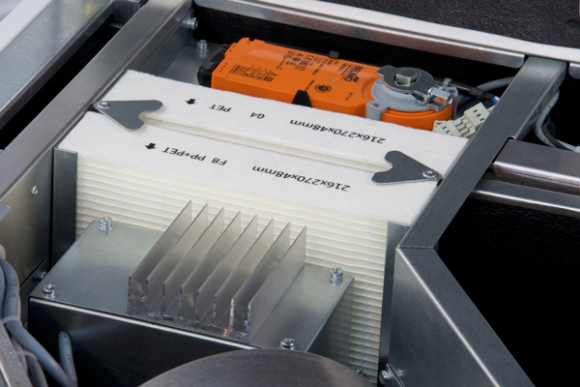Clean air safeguards against virus diseases
Medical professionals consistently point out the danger to human health that bear particulate matter (PM) dispersed in the air. According to the data of the World Health Organisation (WHO), due to air pollution with various finely dispersed pollutants, approximately 7 million people die each year. Such particles enter deeply into human lungs and cardio-vascular system and by doing so lead to development of a range of serious illnesses. Results of a recent research conducted by Italian scientists demonstrated that particulate matter concentration level in the air also affects transmission rate of virus diseases. According to the researchers, the more pollutants the air has, the more the likelihood of infectious diseases transmission.
Such conclusion is contained in the report presented by the researchers from University of Bologna, University of Bari Aldo Moro, University of Trieste and Italian Society of Environmental Medicine. The scientists studied the channels of viral infections transmission in different regions of Italy during 2010, 2016, 2018 and 2020 and found a correlation between the incidence rate and the levels of air pollution with РМ10 and РМ2.5 particulate matter. The obtained data allowed the researchers to conclude that transmission of COVID-19 disease is also contingent upon the air pollution rate.
The research results have great importance in light of implementation of measures aimed at prevention of virus diseases spread, as well point out a particular role of ventilation systems equipped with filters for inflow air have. This issue is especially relevant today for Ukrainian cities where concentration of particulate matter and various pollutants in the air often exceeds European standards.
More pollutants – more virus diseases
It is well known that the main channels for transmission of virus diseases are airborne droplet and direct/indirect physical contact channels. Therefore, all safety measures developed by healthcare authorities are aimed at prevention transmission through these channels. However, healthcare professionals are also well aware of another transmission channel, namely airborne infection through dust. While in the first two cases sources of infection are people and various surfaces and objects, in the third case source of infection is finely dispersed pollutants contained in the air.
Contaminated air contains increased number of PM10 (<10 µm) and PM2.5 (<2.5 µm) particulate matter. Average size of viruses is approximately 0.1 µm. Such difference in sizes allows pathogen organisms to stick to fine dust particles and due to coagulation process to remain in the air for many hours and days travelling with air over long distances. In such state viruses are able to remain alive for a long time.
The Italian researchers analysed data of scientists who studied virus diseases during the last 10 years and found a direct interrelation between transmission of virus infections and levels of air contamination with finely dispersed pollutants. Thus, in 2010 specialists found a correlation between the number of bird flu cases and concentration of PM10 and PM2.5 particulate matter in the air. Due to Asian dust storms, pathogens could have travelled over long distances. In 2016, the researchers proved that respiratory syncytial virus (RSV), which causes pneumonia for children, entered deeply into lungs together with dust particles. The rate of infection transmission correlated with concentration of PM10 and PM2.5 particulate matter. In 2017, an interrelation between the number of measles cases in 21 cities in China during the period from 2013 to 2014 and the concentration of PM2.5 particulate matter was proven. The results of the research showed that increased concentration of PM2.5 in 10 μg/m3 facilitated increase in the number of measles cases. Finally, just recently in 2020 it was officially confirmed that one of the main factors of virus transmission in Lanzhou, China, was polluted air.
Having the results of the above studies at their disposal, the researchers decided to identify correlation between the level of air pollution and COVID-19 transmission in Italy. In order to do so, the researchers analysed the data on concentration levels of PM10 particulate matter throughout the whole country obtained from the regional environmental protection agencies. The obtained data allowed them to determine time periods, during which the level of PM10 in different regions exceeded EU-established threshold of 50 μg/m³, and to compare those results with statistical data on number of disease cases also taking into account incubation period. As a result, the researchers found a direct correlation between exceeding threshold levels of PM10 concentration and number of coronavirus infection disease cases.
Available problem solutions
Is it possible to counter somehow the threat posed by air pollution and mitigate negative effect on human health caused by particulate matter? The solution of this problem, on one hand, lies in creation of proper conditions for decreasing air pollution levels, and on the other hand, in minimization of its impact on human body. Obviously, it is quite difficult to change and influence the level of PM10 and PM2.5 particulate matter in the air, therefore the main precaution measures include limiting person’s time outdoors during dry and windy weather, using personal protective equipment during periods of excessive air pollution with dust (protective masks, respirators, etc.), as well as prevention of particulate matter entering indoors.
Because people spend most of their time indoors, the state of their health in no small part depends on the quality of the air surrounding them. In order to reduce concentration of finely dispersed pollutants in indoor environments, professionals recommend to bring to a minimum usage of carpets and various rug and carpeting in one’s house, wipe dust as often as possible and to carry out wet sweeping in premises, as well as to use correctly designed forced ventilation and air filtration system. Such systems ensure inflow of fresh air into premises while removing dust and pollutants. At the same time, such systems may be equipped with filters of different purification classes, such as coarse filtration (G1…G4 classes), fine filtration (F5…F9 classes) and high efficiency filtering (H10…H14 classes).
Coarse filtration filters allow for removing large particulate matter with dimensions over 10 μm. It may be fine hairs, ash, large dust particles, insects, down feathers, large plant pollen, etc. Fine filtration filters are able to remove particles in diameter over 1 μm, which may be in the form of dust (including finely dispersed dust), fine hairs, medium and large plant pollen, mushroom spores and mould, as well as bacteria. Such filters are an optimal solution for prevention of PM10 and partially PM2.5 particles entering premises, which may pose threat to human health not only as precursors of various diseases, but also as carriers of different pathogen organisms. High Efficiency Particulate Air (HEPA) filters allow for removing the finest particulate matter sized over 0.01 μm from the inflow air. Such filters will not let fine highly allergenic dust PM2.5, mushroom spores and finest pollen, dangerous viruses and bacteria, as well as smog particles, permeate into premises. Due to ability to remove different pathogen microorganisms, HEPA filters are widely used in healthcare facilities. Today they successfully accomplish their job to purify inflow and outflow air and by removing virus disease agents in infectious diseases hospitals around the world.
For over 20 years now Vents has been producing a wide range of ventilation equipment for facilities of various purposes, from apartments and private residences to large-scale industrial facilities and shopping malls. Any VENTS equipment, whether it be supply and exhaust units or air handling units with heat recovery, it may be equipped with air filters of different filtration classes depending on facility purpose and customer needs. Due to utilization of fine and high efficiency air filters, VENTS ventilation equipment has proven itself as a perfect choice for many facilities where a high purity of supplied air needs to be maintained.
Particular attention must be paid to indoor ventilation
Due to COVID-19 pandemics, REHVA, the Federation of European Heating, Ventilation and Air Conditioning Associations, has published a guide on how to operate and use building services in areas with coronavirus outbreak. In this guide, the most efficient practices for prevention SARS-CoV-2 transmission through heating, water supply and ventilation systems identified as of today are presented. This document is a supplement to WHO’s guide for employers and educational institutions and concerns oneself with commercial and public buildings.
As points out one of the authors of the guide, Jarek Kurnitski, the Chairman of REHVA’s Technology and Research Committee, professor at Tallinn University of Technology, “In the scope of this document airborne transmission through small particles (< 5 microns), which may stay airborne for hours and can be transported long distances, is addressed”. Such particles are created via coughing, sneezing and talking, and contrary to larger droplets, they do not immediately settle down of surfaces and thus remain in the air. Therefore, ventilation is an important instrument for removing a significant amount of such particles from premises.
The authors of the guide state that risk of contracting COVID-19 is increased in overcrowded and poorly ventilated premises. Coronavirus particles are 80–160 nm in size and remain active in standard conditions up to three hours in the air indoors, and up to two or three days on surfaces of various objects. Due to this, professionals recommend to turn on ventilation systems two hours before the beginning of a working day and not to turn them off immediately after its end in commercial purpose premises. Even better is to let ventilation run 24/7 with reduced efficiency during non-working hours. Forced ventilation systems in toilet facilities in regions with active COVID-19 transmission must work on a 24-hour basis, and maintenance engineers must check negative air pressure in ventilation systems regularly. That being said, it is not recommended to open windows in toilet facilities, which have running ventilation, because it may lead to air backflow into other premises.
Another recommendation is not to use air recirculation mode because virus particles having permeated through return ducts of centralized ventilation units may once again enter a building. During disease outbreaks, recirculation dampers must be closed via control system or manually. Decentralized systems using local recirculation, such as fan coil units, must be turned off as well whenever possible.
The guide also mentions examples of actions that provide no result and of no practical use. For example, it is commonly believed that high temperature and humidity within premises may help to stove off virus. However, REHVA specialists point out that SARS-CoV-2 virus is susceptible only to temperatures over +30 °С and humidity over 80 %. For obvious reasons such conditions are not acceptable for commercial purpose premises and public facilities. Therefore, heating and cooling systems do not require any adjustments.
Clean fresh air is a pre-requisite for maintaining human health. It is all the more important during outbreaks of virus infectious diseases, which is confirmed by the researchers’ study results. Unfortunately, nowadays one cannot always rely on the atmospheric air being very clean. Nevertheless, each of us has the opportunity to safeguard oneself as much as possible from the impact of particulate matter and to breathe clean air. Personal protective equipment will be useful for this purpose outdoors, and indoors one can utilize ventilation systems equipped with air filters and by selecting correct ventilation mode.
Take care of your own and your family members’ health today by installing proper forced ventilation and air filtration system. Vents will gladly offer you the best possible solutions!





